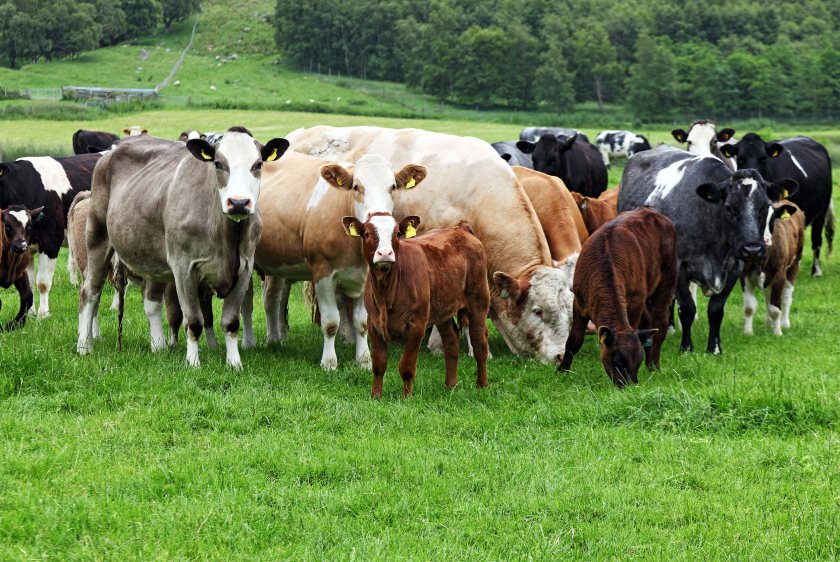
A pioneering new genetic tool promises to help UK beef farmers slash their herds’ carbon footprints while boosting profitability and animal welfare.
The new system, known as EnviroBeef, combines results from the National Beef Evaluations (NBE) into a single score, enabling farmers to benchmark animals across all beef breeds for their potential to reduce greenhouse gas emissions through improved herd efficiency.
Alongside its environmental benefits, EnviroBeef, launched by AHDB, will also support farmers in making breeding choices that enhance profitability, animal health, and welfare.
Harriet Bunning, lead animal genetics expert at the levy organisation, said the suckler industry is under pressure to reduce emissions.
She said: "Unlike other approaches which may have ongoing costs to farmers, using existing data to breed a more efficient herd is a win-win.
"A more efficient herd will be more profitable as well as producing beef with a lower carbon footprint, regardless of the system.
“Measures within the National Beef Evaluation such as productive lifespan and calf survival score well in EnviroBeef, which means using the tool will also have positive impact on the health and welfare of suckler cattle.”
The EnviroBeef score will be displayed alongside NBE results. A score of -10% indicates an animal has the genetic potential to cut the carbon footprint of suckler beef by 10% compared to the Great Britain average.
Farmers can use these scores, along with other selection criteria such as temperament and health, to make informed decisions—whether choosing the best bull, removing less efficient cows, or selecting heifers for breeding.
The NBE draws on national records, including birth, death, and calving data from the British Cattle Movement Service (BCMS) and carcase information from abattoirs.
This information is used to build a genetic “family tree” for each animal, incorporating breed society and milk recording data. EnviroBeef can generate a score for any bull, cow, or growing/store animal where sufficient data exists to reach a reliable accuracy.
Ms Bunning added: “The level of certainty of the EnviroBeef score is measured by its accuracy. This is a value between 0 and 100%. 100% would mean that even with a large amount more data, we do not expect the score to change.
"You might see scores close to 100% with artificial insemination (AI) sires. Other animals will have lower accuracies, meaning that their EnviroBeef score is the best we can do with the current data, but as we receive more data, the score may change.
"Importantly, any EnviroBeef score with an accuracy greater than 0% is better than a random guess.”
For suckler beef producers such as James Herrick from Leicestershire, the new tool is a welcome development: "The carbon footprint of our herd is becoming increasingly important," he said.
"I believe breeding better cattle and using the genetic tools and data we have available to us is a great way of doing that.
"The great thing about the National Beef Evaluation is I can compare cattle against other breeds and choose the cattle that are right for my system.
"The ability to breed cattle that are more carbon efficient is important to our goals because if we can breed more efficient cattle that also helps our bottom line."
